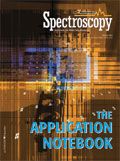Vintage MAVRO Series of Spectrophotometric Calibration Artifacts
Stranaska LLC
A commemorative series of spectrophotometric calibration artifacts has been developed in tribute to Dr. Radu Mavrodineanu, the "founding father" of the contemporary NIST high-accuracy spectrophotometry program.
Molecular absorption spectrophotometry is a vital tool in analytical research, quality control, and manufacturing-support laboratories. The assurance of accurate spectrophotometric data relies on various validation measures including science-based procedures to demonstrate that the spectrophoto-meter is functioning properly and within specification for its intended use. Primary spectrophotometric Standard Reference Material (SRM) artifacts from the National Institute of Standards and Technology (NIST) serve as the traditional benchmark for this purpose. Additionally, these SRM artifacts provide the primary means of traceability linkage for secondary spectrophotometric artifacts produced by commercial suppliers.

Historical Background
The current array of primary spectrophotometric SRMs is an extension of the high-accuracy spectrophotometry program that originated in 1969 within the Center for Analytical Chemistry of NIST, known at that time as the National Bureau of Standards (NBS). For more than 25 years, the overall success of this program can be attributed to the technical vision, leadership, and pioneering accomplishments of Dr. Radu Mavrodineanu, a renowned analytical spectroscopist and scientist (1). Included among his many valuable contributions to this program are the original SRMs developed for wavelength accuracy, transmittance and absorbance accuracy, and stray radiant energy in the ultraviolet (UV) and visible (VIS) regions of the electromagnetic spectrum.
Vintage MAVRO Series
To continue the legacy of Dr. Mavrodineanu, or Mavro, as he was known to many of his close friends and colleagues, Stranaska is proud to introduce its new Vintage MAVRO Series. This commemorative series is an integral part of the company's expanding product line of secondary calibration artifacts for analytical metrology (CA2M). Produced on demand and in limited quantities only, the Vintage MAVRO Series is comprised of the company's top ten CA2M products for the definitive calibration of UV/VIS absorption spectrophotometers. Included in the series are eight photometric artifacts, one wavelength artifact, and one stray radiant energy artifact; the eight photometric artifacts are subdivided into five solid CA2M artifacts and three liquid CA2M artifacts. Each of the ten secondary CA2M products comprising the Vintage MAVRO Series is meticulously patterned after or derived from a corresponding primary spectrophotometric NIST SRM artifact (see Table I).

Table I. Vintage MAVRO Series of Spectrophotometric Calibration Artifacts
Reference
(1) J. Messman, "Historical Review of Standard Reference Materials for Analytical Spectrophotometry – A Tribute to Dr. Radu Mavrodineanu," Poster Paper Number 1 presented at Federation of Analytical Chemistry & Spectroscopy Societies 30th Annual Meeting, Fort Lauderdale, Florida, 19 October 2003.
Stranaska LLC
4025 Automation Way, Building A, Fort Collins, CO 80527
Tel. (970) 282-3840, Fax (970) 282-7040

Thermo Fisher Scientists Highlight the Latest Advances in Process Monitoring with Raman Spectroscopy
April 1st 2025In this exclusive Spectroscopy interview, John Richmond and Tom Dearing of Thermo Fisher Scientific discuss the company’s Raman technology and the latest trends for process monitoring across various applications.
A Seamless Trace Elemental Analysis Prescription for Quality Pharmaceuticals
March 31st 2025Quality assurance and quality control (QA/QC) are essential in pharmaceutical manufacturing to ensure compliance with standards like United States Pharmacopoeia <232> and ICH Q3D, as well as FDA regulations. Reliable and user-friendly testing solutions help QA/QC labs deliver precise trace elemental analyses while meeting throughput demands and data security requirements.